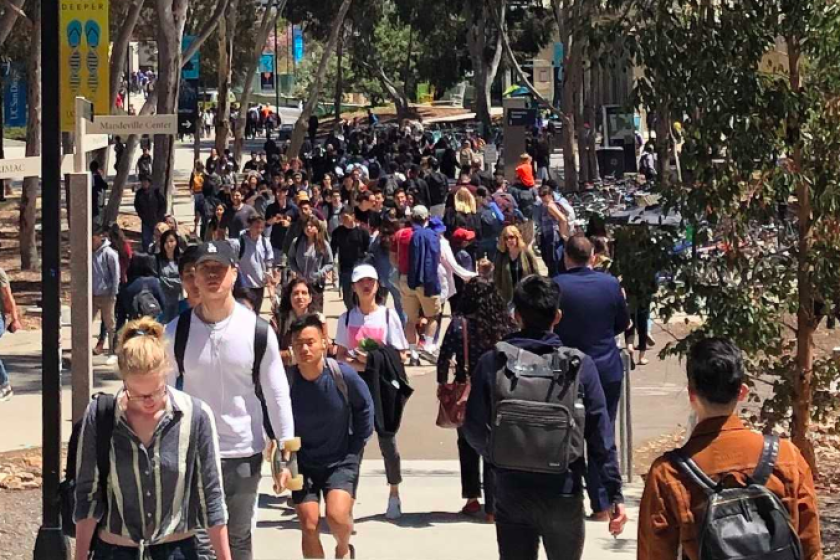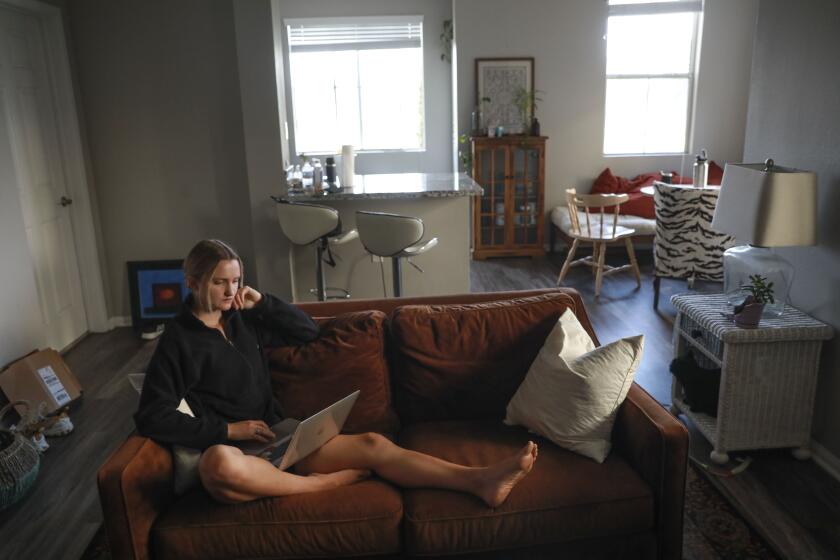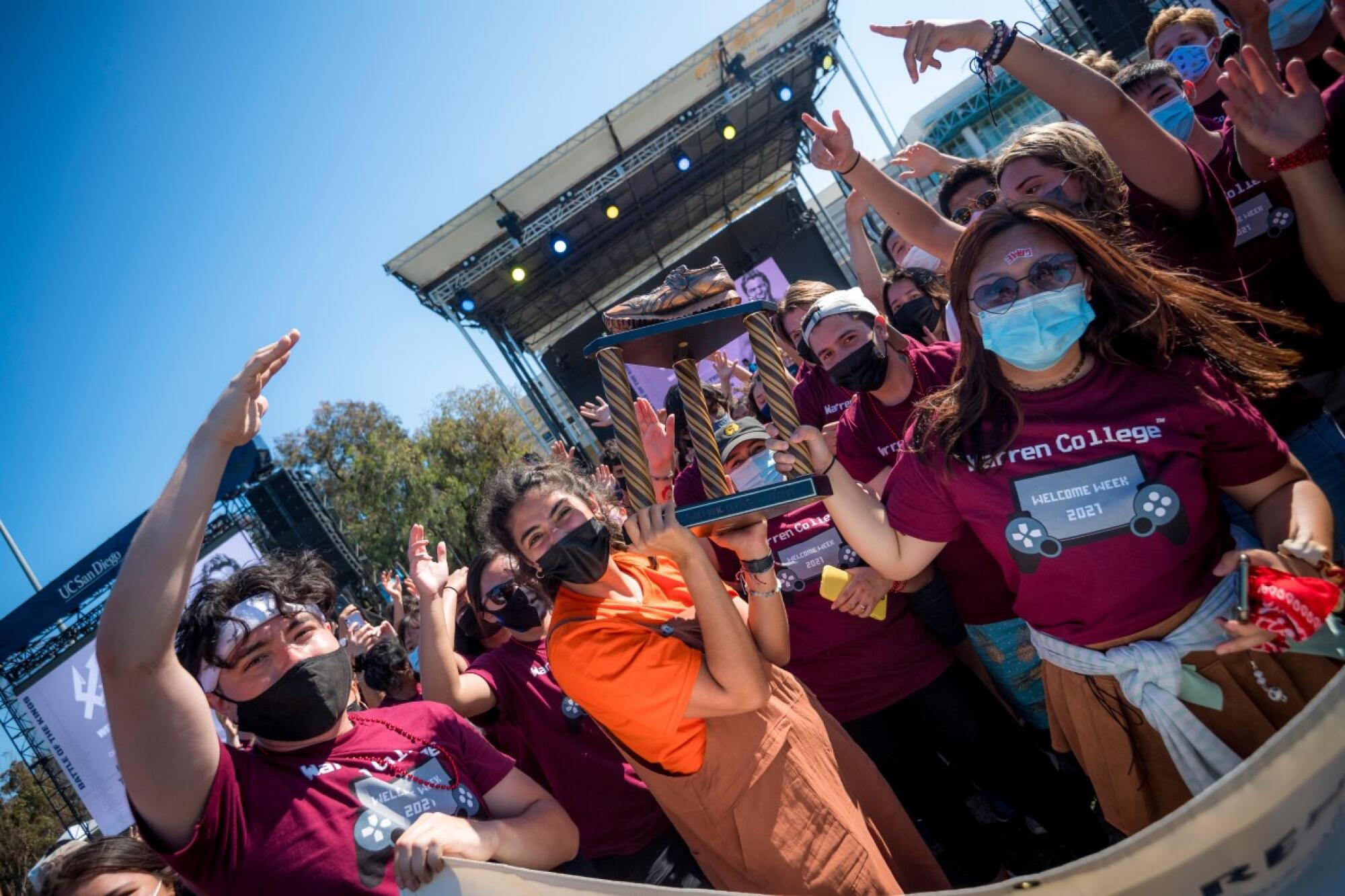
Yeah, we’re brainy. But we also wanna rock. So stop saying UCSD’s initials stand for University of California Socially Dead. It’s not true anymore.
Spend a few minutes with one of the school’s students and you’re likely to hear some version of that message.
This story is for subscribers
We offer subscribers exclusive access to our best journalism.
Thank you for your support.
The joke has been making the rounds for years, the outgrowth of UCSD’s STEM-iness. But the university’s sense of itself is shifting amid meteoric growth that pushed enrollment to nearly 43,000 this fall.
It’s now OK to be smart and social.
“We’re like students everywhere else,” said Cedric Hughes, a UCSD sophomore. “On a Friday night, we just want to know where the parties are.”
He’s doing his part to make that happen. Hughes recently opened UCSD GrapeVine, a student-curated website that lists events ranging from bonfires to campus festivals to a game of capture the flag.
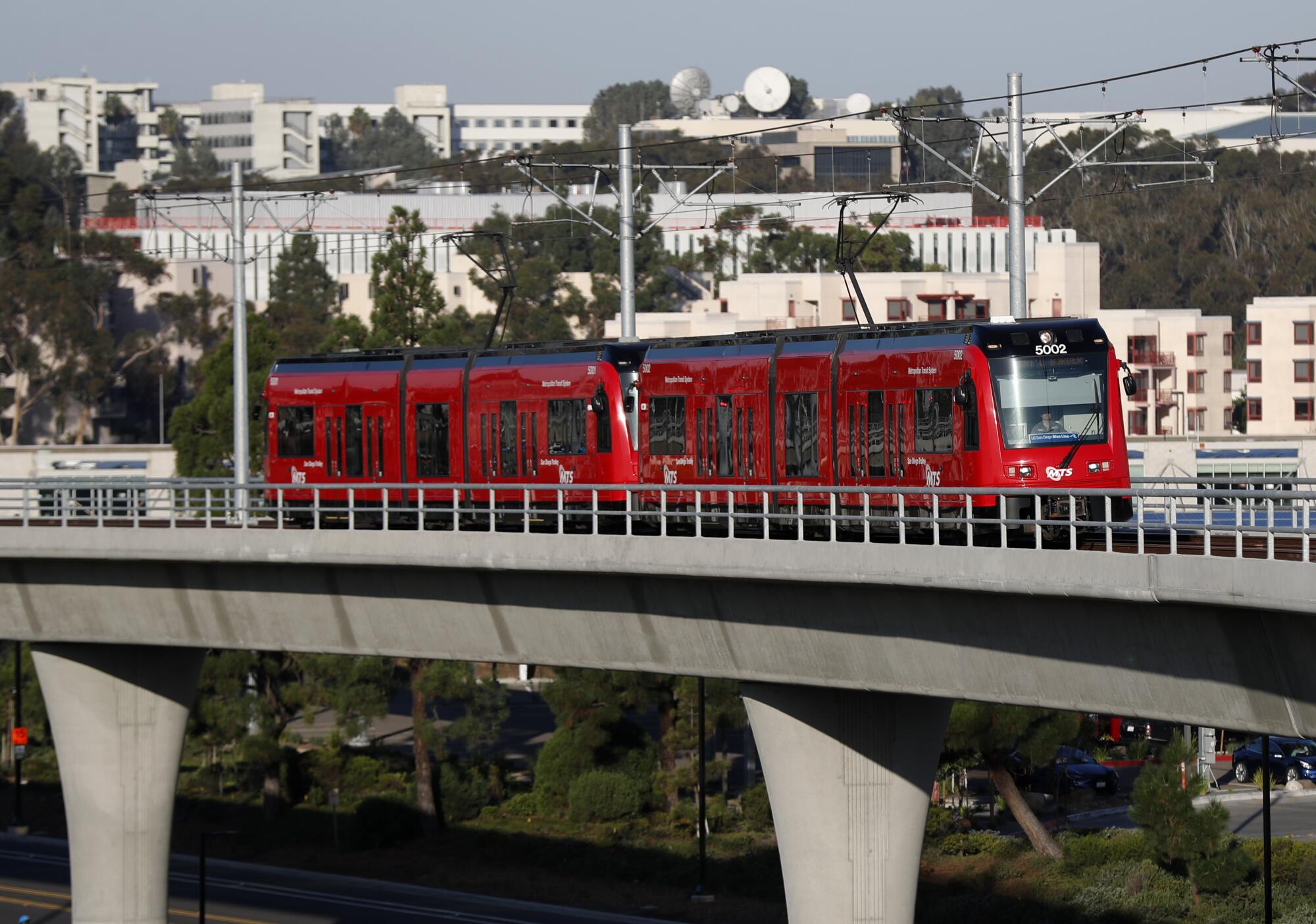
It’s not the kind of marketing you’ll get from the university’s administrators. But they’re behind the change. In recent years, the school has been cultivating a warmer, more open social climate, mostly by adding better-designed housing that features fun eateries, cool recreation spots and quarters for some of UCSD’s hundreds of student groups.
The response has been galvanizing.
This fall, the heart of UCSD seems to have shifted from iconic Geisel Library, where average daily visitation is down by nearly 1,100, to a massive and colorful new residential village that has a sweeping quad, five dining spots, a crafts center and a 600-seat lecture hall called The Jeannie.
It’s beehive-busy. In recent weeks, the quad has been lined with sunbathers, something rarely seen at UCSD, a Shangri-La on the edge of the Pacific.
The village, which houses 2,000 students, is called the North Torrey Pines Living and Learning Neighborhood. On Thursday, the San Diego Architectural Foundation gave the project one of its coveted Orchid architecture awards.
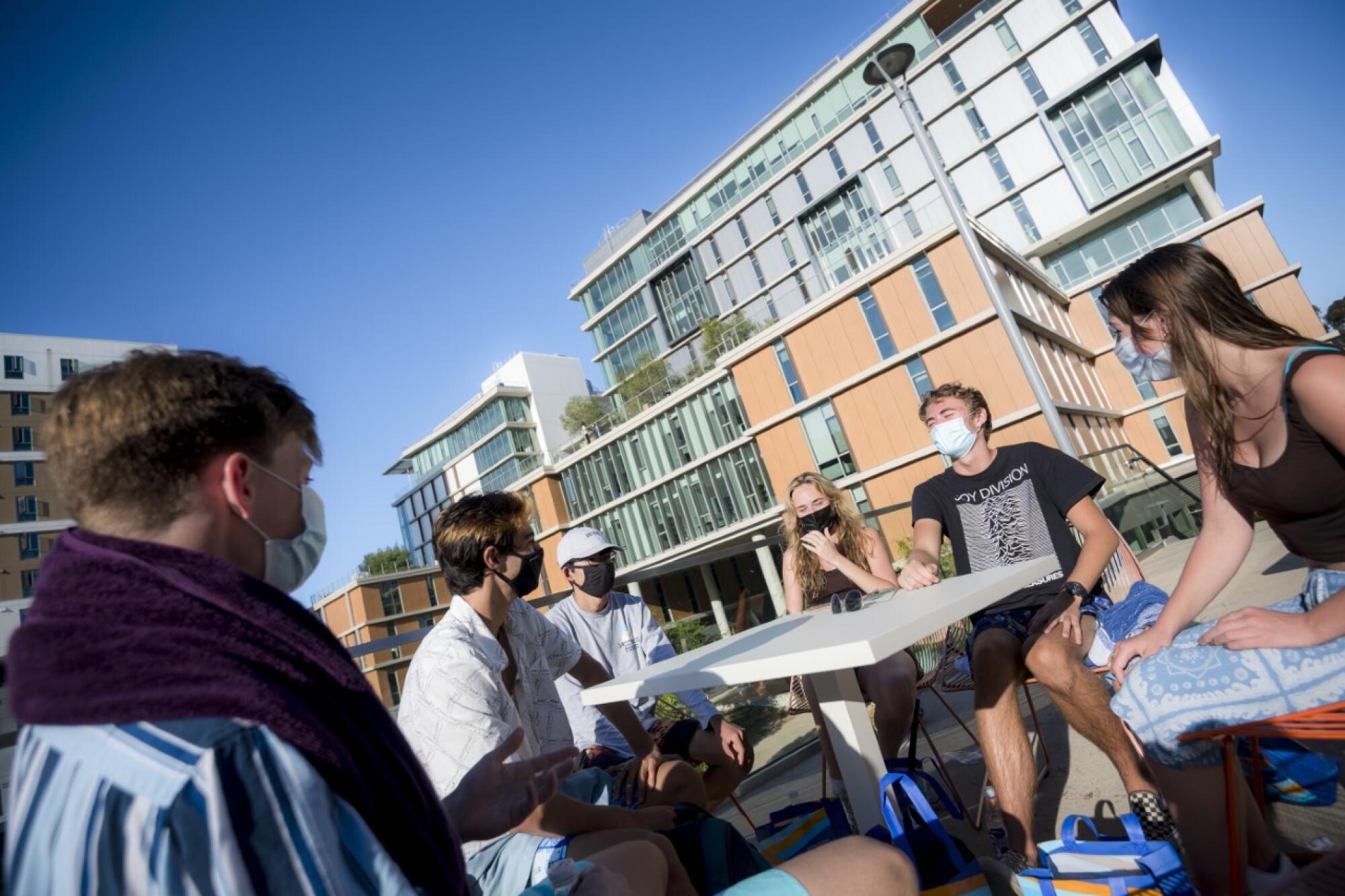
A similar village is under construction about a half-mile south, next to the La Jolla Playhouse.
UCSD also has been straightening out and expanding a network of campus roads and walkways that were so confusing they tended to push people apart rather than bring them together. It was common to see someone standing still, bearing an expression that said, “Where, exactly, am I?”
The walkways will make it easier for people to find Rimac Arena at a key moment in school history. UCSD has moved up to Division 1 in athletics and is trying to build the sort of spirited men’s basketball program that has brought a lot of joy and success to its younger sister campus, UC Irvine.
Before the pandemic, the basketball team drew only about 600 people a game. The athletic department wants to raise that number to at least 2,000 over the short term. It’s already trying to persuade retailers such as Costco and Target to carry UCSD sweaters and T-shirts to bolster name recognition.
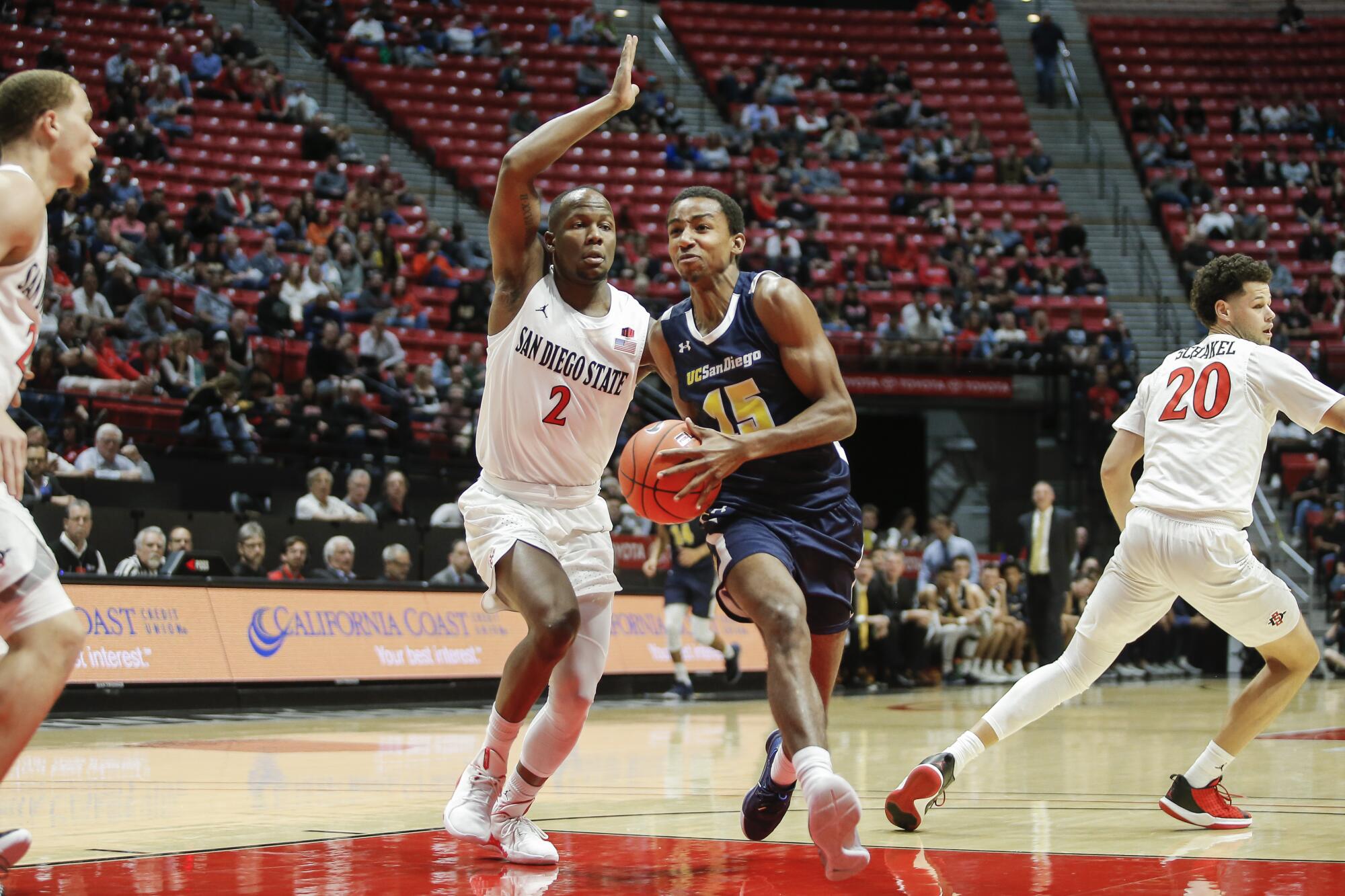
The school also is about to more fully open itself up to the rest of San Diego County socially. On Nov. 21, two Blue Line trolley stations will begin serving campus, including one that will function as a “front door,” something UCSD has never had.
The station will guide visitors on to a spacious art-filled plaza where an outdoor amphitheater capable of holding nearly 3,000 people is being built. It’s located next to Design and Innovation, a new hands-on design center that will open before the end of the year and eventually feature a major restaurant. On the edge of the plaza, UCSD will build a 1,308-bed complex that will have two towers measuring at least 20 stories.
The plaza will include an amphitheater, artwork, and huge play swings. Yes, play swings
A short distance away, UCSD will build Triton Pavilion, a student center that will rival those at big rah-rah schools like Ohio State and Michigan.
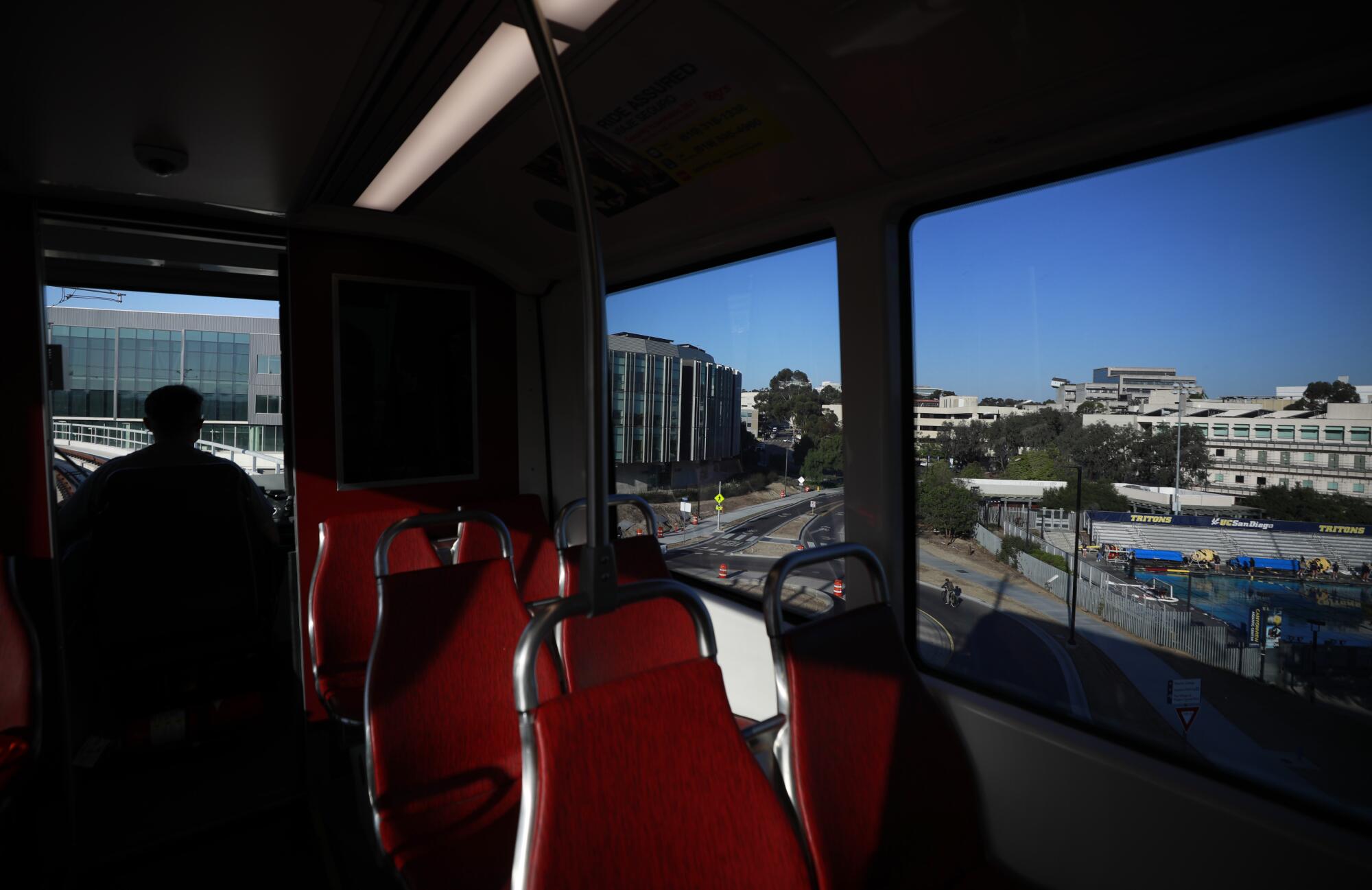
Chancellor Pradeep Khosla is hoping the trolley will make the campus an easy-to-reach social destination, as well as serving students, about 20,000 of whom have downloaded the trolley app.
The whole enterprise has gotten an unanticipated lift from an unwanted source: the pandemic.
In a sentiment felt on campuses nationwide, UCSD students say they’re hungry for companionship and camaraderie after a year in which COVID-19 pushed most classes online, causing isolation, fear and loneliness. They’re reaching out more than they have in the past.
“The campus was dead, a ghost town, completely silent,” said Isabella Johnson, a sophomore. “But we’re back. I purposely walk along Library Walk so that I can see all of the people.”
Few envisioned that UCSD would develop into a mammoth school with a buzzy social life when it opened in the fall of 1960.
Planners projected that enrollment would someday max out at a modest 27,500, and that UCSD would focus on research almost to the exclusion of everything else. The Cold War and space race were dominating American life.
The enrollment estimate was raised slightly, to 29,900. UCSD didn’t reach that neighborhood until 2014. Then came the explosion. Over the next seven years, enrollment grew by nearly 14,000, reaching a record 42,875 this fall.
UC Santa Cruz would have to more than double in size to hit that number.
The sea of students now on UCSD’s pathways during class changes resembles the crowds pouring out of Petco Park after the Padres win a game. Everywhere you look, you see young people wearing AirPods, listening to artists such as Doja Cat and BTS and sipping boba tea as they go about their day.
There are many factors for the boom, including the rise in the state’s population and a big increase in the number of high school students who are eligible for admission to what’s widely considered to be the best public university system in the U.S.
It has led the University of California to open its doors wider in recent years. Much of that human tide is flowing to UCSD, which still has space to grow. Its main campus covers 650 acres — making it as large as UCLA and USC combined.
The UC plans to expand the system by 20,000 students in the near term, and UCSD will remain a major offramp. It’s possible that enrollment will surpass 50,000, making La Jolla a “super U,” like Ohio State and the University of Texas.
Fall enrollment at UC San Diego broke records, but it still faces housing shortages.
The projected growth is causing a lot of excitement in La Jolla, and some anger.
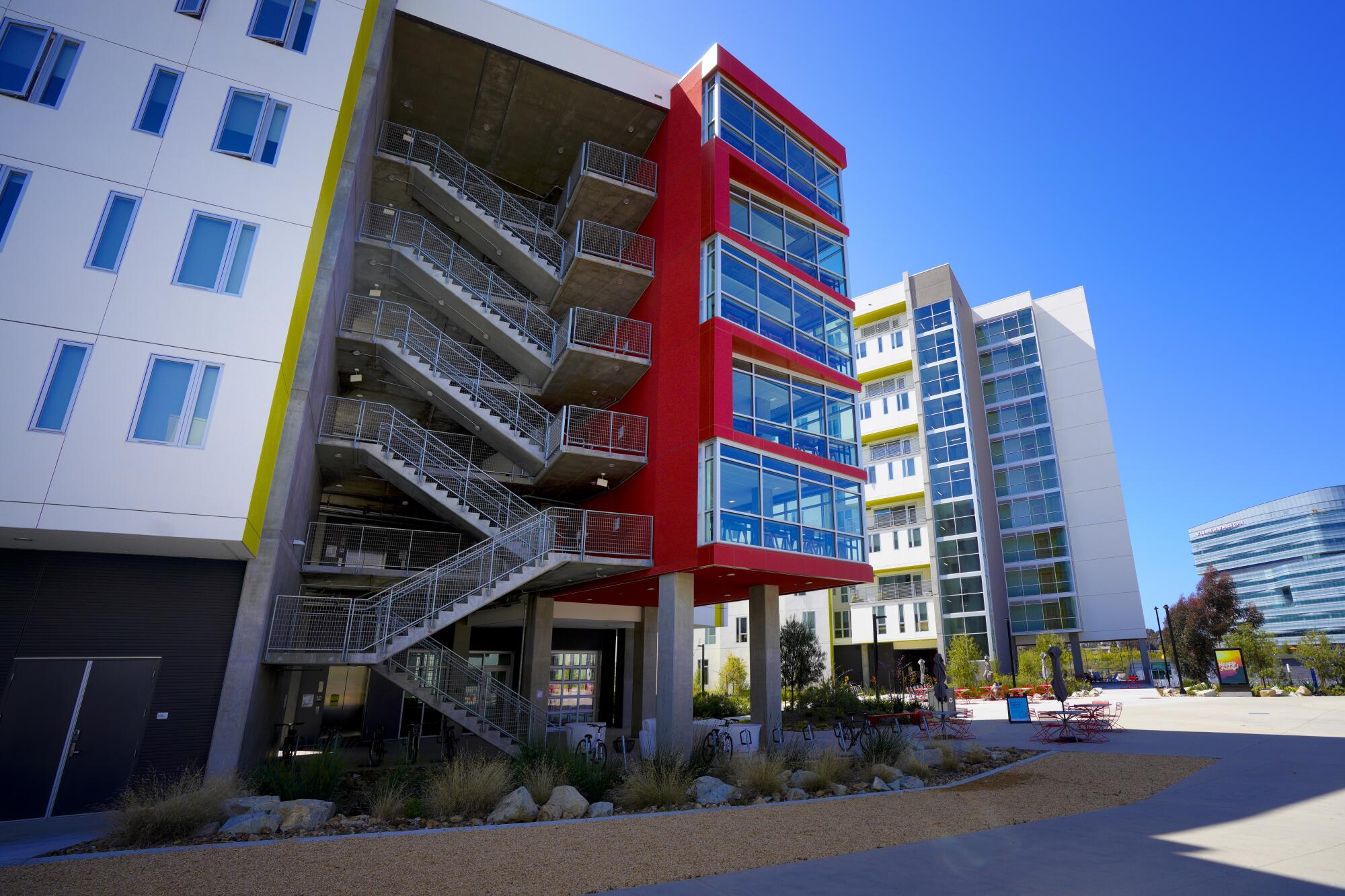
This year’s surge in enrollment produced a major housing shortage. In July, about 3,200 students found themselves on waiting lists for lodging. Many were forced to try to find housing in surrounding communities, where prices are high and the stock is limited. Many students say the university failed to give them a clear, timely warning that a problem was imminent.
Nearly 3,200 people are on waiting lists as the campus grapples with more growth
The problem also directly hit the main campus. At the start of the fall quarter, there were hour-long waiting lines at dining halls. The crush of people also caused disruptions in the main source of “oxygen” for students: WiFi. That was an affront to undergraduates, most of whom are members of Generation Z, the first who have always lived with the Internet, social media and cellphones.
Khosla seemed to shrug off the July housing shortage during an interview with the Union-Tribune, saying, “We did what we could. It is what it is.”
The chancellor backtracked a little last week, saying he is studying whether he should again allow up to three students to live in some dorm rooms, which could increase the housing supply. At the height of the pandemic, he did away with “triples” to promote social distancing, a decision that eliminated 2,000 beds.
Restoring the triples might be a temporary way of getting UCSD to fall 2023, when the 2,000-bed Theater District Living and Learning Neighborhood opens on campus.
The trolley also could provide relief if developers — possibly including the university in some way — construct affordable housing along the light-rail line.
“The development of this campus is not happening in a knee-jerk reaction way, like it used to,” Khosla said. “There’s a whole lot of thought behind this ...
“For me, everything is up for discussion as long as we’re able to maintain our momentum and maintain our top-notch ranking and impact.”
More to Read
Sign up for Essential California
The most important California stories and recommendations in your inbox every morning.
You may occasionally receive promotional content from the Los Angeles Times.
